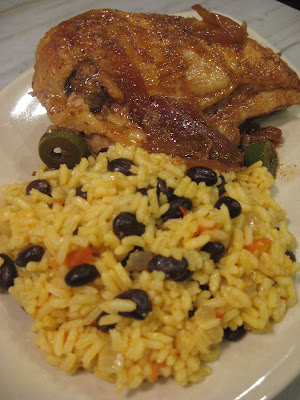My first instinct was to make a souffle. Then I thought of a creamy soup. But as visions of Thanksgiving fare danced through my head, I ultimately settled on these acorn squash rings brushed with an orange-sage butter and filled with an apple and sausage stuffing. It's a great dish that can easily be done with or without the sausage and makes for an elegant side dish on any fall dinner table. I'm already planning a slightly different version to take the place of traditional stuffing at our own Thanksgiving feast.
And speaking of Thanksgiving, this blog's Nona (Godmother), Ivy of Kopiaste, passed on to me this award which I am extremely thankful for:
 I'd like to pass this award on to all the blogs I've been trying to keep up with as they are all so deserving of it!
I'd like to pass this award on to all the blogs I've been trying to keep up with as they are all so deserving of it!
Sausage & Apple-Filled Acorn Squash Rings with Orange and Sage Butter
Makes 4 servings5 tablespoons butter
4 to 5 sage leaves, finely chopped
Zest of 1/2 an orange
1 pound sausage, casings removed
4 shallots, chopped
2 McIntosh apples, peeled, cored, diced
1/4 cup chicken or vegetable broth
Juice of 1/2 orange
1/4 cup toasted pine nuts
1 large acorn squash, unpeeled and cut into 1-inch-thick rings, seeded
Salt and pepper to taste
Melt 4 tablespoons butter in a small saucepan and stir in sage and orange zest and set aside. Heat skillet and when hot toss pine nuts in and toast until fragrant and golden. Remove from skillet and set aside.
Brown sausage in hot skillet, all the while breaking it up with a wooden spoon. Remove sausage to a bowl. Add shallots to skillet along with last tablespoon of butter and saute until soft. Add apples, broth and orange juice. Saute until liquid evaporates. Remove from heat, stir in sausage and season filling to taste with salt and pepper.
Preheat oven to 350 degrees. Lightly grease a large rimmed baking sheet. Place squash on baking sheet and brush each ring with orange and sage butter, sprinkling with salt and pepper to taste. Place filling in center of each ring. Drizzle with remaining orange and sage butter. Cover loosely with foil and bake until squash is tender about 35 minutes.


























































